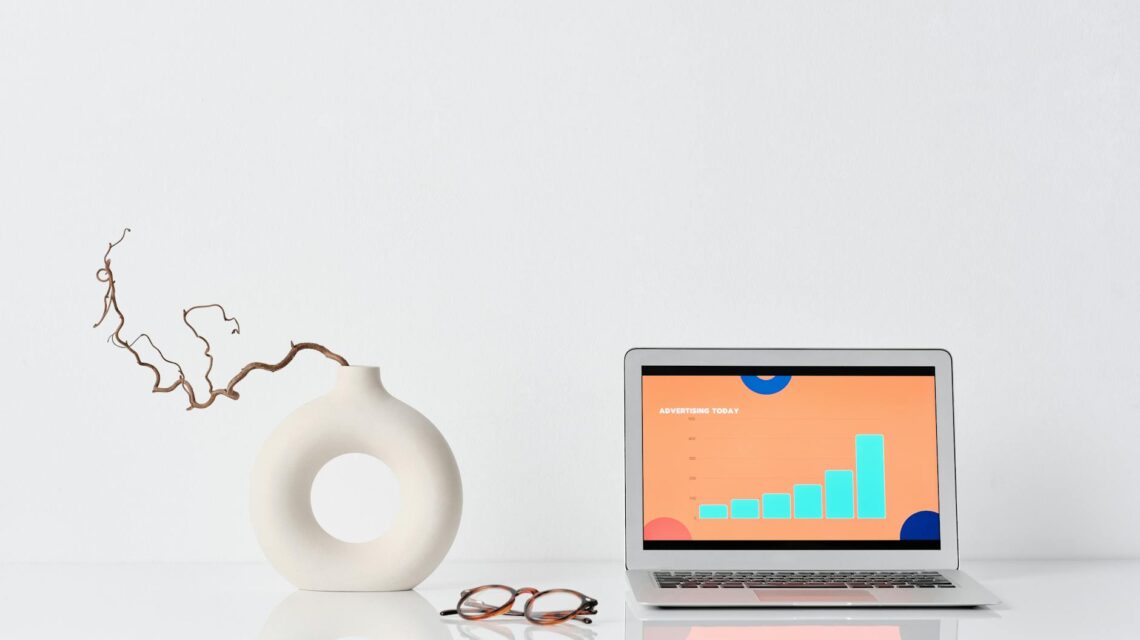You’ve Been Lied To About A/B Testing
Let’s be honest. When you hear “A/B testing,” what’s the first thing that pops into your head? A green button versus a red button? Changing a single word in a headline? Yeah, me too. For years, the marketing world has been obsessed with these simple, almost trivial, split tests. They’re easy to run, they give you a quick (and often misleading) sense of accomplishment, and they make for great case studies with dramatic, clickbaity titles. But that’s not the real science of A/B testing. Not even close. It’s like calling a first-aid kit a fully-equipped operating room.
The real, impactful work of experimentation goes so much deeper than surface-level tweaks. It’s a rigorous process rooted in psychology, statistics, and a deep understanding of user behavior. It’s about asking the right questions, not just finding easy answers. If you’re stuck in the cycle of testing minor changes and seeing negligible results, it’s because you’re practicing the art of button-coloring, not the science of conversion. This article is your guide to making that leap. We’re going beyond the basics to explore the robust framework that turns random guesses into predictable, scalable growth.
Key Takeaways:
- True A/B testing is a scientific process, not just a game of changing colors or headlines.
- A strong, data-informed hypothesis is the most critical component of any successful test.
- Understanding statistical significance—concepts like p-value and confidence levels—is non-negotiable for valid results.
- Common pitfalls like stopping tests too early or ignoring external factors can completely invalidate your findings.
- Focus on tracking metrics that align with real business goals, not just vanity metrics like clicks.
The Great Button Color Fallacy: Why Small Tweaks Fail
We’ve all seen the case study: “How changing our button from blue to green increased conversions by 300%!” It’s compelling. It’s simple. And it’s usually wrong. Or, at the very least, it’s missing the entire point. While a color change *might* occasionally produce a lift, attributing it solely to the color is a classic case of confusing correlation with causation. Was the new color simply more noticeable? Did the old color have poor contrast against the background? Was the test run during a holiday sales period that would have boosted conversions anyway? The “why” gets lost.
Focusing on these micro-changes is a trap for several reasons:
- It encourages a “shotgun” approach: You’re just throwing random ideas at the wall to see what sticks, without any underlying strategy.
- It ignores the user’s motivation: Does a user who is not convinced by your value proposition suddenly decide to buy because the button is a different shade of orange? Unlikely. The real barriers to conversion are usually related to clarity, trust, value, or anxiety—not aesthetics alone.
- It yields insignificant results: More often than not, these tiny tests result in “no significant difference.” This can lead to a feeling that A/B testing “doesn’t work,” when in reality, the *methodology* is flawed.
The real wins come from testing bold, strategic changes rooted in a deep understanding of your users. It’s about challenging core assumptions about your landing page, your pricing model, or your user onboarding flow. That’s where the science begins.
The Bedrock of a Good Experiment: Crafting a Killer Hypothesis
If you take only one thing away from this article, let it be this: a test is only as good as its hypothesis. Without a strong hypothesis, you’re not experimenting; you’re just guessing. A proper hypothesis isn’t just a prediction; it’s a structured statement that forms the entire basis of your experiment.
What a Hypothesis Is (and Isn’t)
A weak hypothesis is: “I think a new headline will increase sign-ups.” It’s vague and untestable. A strong hypothesis follows a clear structure: Because we observe [data/insight], we believe that [change] for [user segment] will result in [impact]. We’ll know this is true when we see [metric change].
Let’s break that down:
- The Observation (The Why): This is the most crucial part. It should be based on data. Where are you getting this idea from? Is it from user session recordings, heatmaps, customer support tickets, survey feedback, or analytics data? The observation provides the reason for the test. Example: “Because we observe from our funnel analysis that 60% of users drop off on the pricing page…”
- The Change (The What): This is the specific action you’re going to take. It should be a direct solution to the problem identified in your observation. Example: “…we believe that changing the layout to a simplified, three-tier comparison table instead of the current feature-heavy grid…”
- The Impact (The Result): What do you expect to happen? This should be a measurable outcome. Example: “…will result in a reduction of user anxiety and an increase in plan selections.”
- The Measurement (The Proof): How will you prove it? Define your primary success metric. Example: “We’ll know this is true when we see a 15% increase in clicks on the ‘Choose Plan’ buttons and a 5% overall lift in completed subscriptions.”
Putting It All Together
A full, powerful hypothesis looks like this: “Because our user surveys show that potential customers are overwhelmed by the number of features listed on our pricing page, we believe that introducing a simplified, benefits-focused pricing table for new visitors will reduce choice paralysis and increase their confidence to purchase. We will measure this by tracking a 10% increase in the conversion rate from this page to the final checkout.”
See the difference? This hypothesis is strategic, data-driven, and has a clear success metric. Win or lose, you will learn something valuable about your users. A button color test just tells you if people clicked red more than green on a Tuesday.

The Mathy Bit (Don’t Worry!): Understanding the Science of A/B Testing Statistics
Okay, here’s where some people’s eyes glaze over. Statistics. But you can’t talk about the science of A/B testing without it. Ignoring the numbers is like a doctor prescribing medicine without checking the patient’s vitals. You don’t need to be a data scientist, but you absolutely must grasp a few core concepts to avoid making terrible decisions based on faulty data.
Statistical Significance & The P-Value
In simple terms, statistical significance is the likelihood that the result of your test is not due to random chance. If your new version got 105 conversions and the old one got 100, is that a real win or just random fluctuation? The p-value helps answer this.
The p-value is a number between 0 and 1. A low p-value (typically ≤ 0.05) means it’s very unlikely your result was a random fluke. If your p-value is 0.03, it means there’s only a 3% chance that the observed difference happened by chance. This is generally considered a “statistically significant” result.
Confidence Level & The Other Side of the Coin
The confidence level is the inverse of the p-value. If your p-value is 0.05, your confidence level is 95% (1 – 0.05 = 0.95). So, a 95% confidence level means you are 95% sure that the result is not random. Most A/B testing tools use 95% as the standard threshold for declaring a winner.
A simple analogy: Imagine you’re flipping a coin you suspect is weighted. If you flip it 10 times and get 7 heads, you might think it’s biased. But it could be chance. If you flip it 10,000 times and get 7,000 heads, you can be much more *confident* that the coin is actually weighted. The larger sample size gives you a higher confidence level and a lower p-value.
Sample Size: Don’t Stop the Test Too Soon!
This brings us to the most common—and most destructive—mistake in A/B testing: stopping the test the moment it reaches 95% significance. This is called “peeking” and it dramatically increases the odds of a false positive. Why? Because results fluctuate wildly at the beginning of a test with a small sample size. You might see a huge lift after two days, only for it to completely disappear by the end of the week.
Before you even start a test, you must use a sample size calculator. You input your baseline conversion rate, the minimum lift you want to detect (the Minimum Detectable Effect, or MDE), and your desired significance level. The calculator will tell you how many visitors you need *per variation* before you can trust the results. Stick to it. Run the test for full business cycles (usually full weeks) to account for weekday/weekend variations in traffic behavior.

The Experimenter’s Toolkit: A/B vs. Multivariate vs. Split URL Testing
The term “A/B testing” is often used as a catch-all, but there are different types of tests for different situations. Choosing the right one is key.
A/B Testing (or A/B/n Testing)
This is the classic. You’re testing two or more distinct versions of a single page against each other. Version A (the control) vs. Version B (the variation). You can have Version C, D, etc. (that’s the “/n” part), but the core idea is you are comparing entire page experiences. It’s perfect for testing radically different designs or value propositions.
- Best for: Radical redesigns, testing different user flows, significant changes to a page layout.
- Example: Testing a single-column landing page vs. a two-column landing page.
Multivariate Testing (MVT)
Multivariate testing is more complex. Instead of testing completely different pages, you’re testing multiple combinations of elements *on the same page* at once to see which combination performs best. For example, you could test three different headlines AND two different hero images. This would create 3×2=6 total combinations that are tested simultaneously.
- Best for: Optimizing a page that already performs well. Identifying which specific elements have the most impact.
- Requires: A very large amount of traffic, as it has to be split between many variations.
Split URL Testing
This is similar to A/B testing, but instead of the testing software changing elements on a single URL, you send traffic to two completely different URLs. This is ideal when the changes you want to test are so significant that they can’t be handled by a visual editor, like a complete backend technology change or a multi-page redesign of a checkout process.
- Best for: Testing a completely new user flow, backend changes, or when designs are hosted on separate URLs.
- Example: Testing your current multi-page checkout against a new single-page checkout hosted at `your-site.com/new-checkout`.
The Hidden Dangers: Common Pitfalls That Will Wreck Your Data
Running a scientifically sound testing program means being vigilant about a few common but sneaky traps that can lead you astray.
1. The Regression to the Mean Monster
This sounds complicated, but it’s simple. Extreme results tend to move closer to the average over time. You might launch a test and see an incredible 50% lift on day one. It’s exciting! But it’s almost certainly an outlier. As more data comes in, that number will almost always drop and settle closer to a more realistic figure. This is another reason why you can’t stop a test early.
2. Ignoring External Factors (The Validity Threat)
Did you run your test during a major holiday? Did a competitor launch a huge sale? Did your company get mentioned on a popular podcast, sending a flood of unusual traffic? These are called “validity threats.” They are external events that can pollute your data and make it impossible to know if your changes caused the result. Always keep a log of what’s happening in your business and industry while tests are running.
3. Only Tracking One Metric
You test a change to your sign-up form that makes it much shorter. Hooray! Your form completions (your primary metric) go up by 20%. But what you don’t notice is that the quality of these new leads is terrible, and the final sales conversion rate (a secondary metric) drops by 15%. You’ve optimized for a local maximum at the expense of the overall business goal. Always track a primary success metric, but also keep an eye on a handful of secondary “guardrail” metrics to ensure you’re not hurting the business elsewhere.

Conclusion: Cultivate a Culture of Experimentation
The true science of A/B testing isn’t about finding a magical “winning” color or a perfect headline. It’s about building a continuous loop of learning. It’s a mindset shift from “I think this will work” to “I have a hypothesis that this will work, and here’s how I’m going to prove or disprove it.”
Every test, whether it “wins” or “loses,” provides an invaluable insight into your customers’ behavior, motivations, and pain points. A “losing” test that was based on a solid hypothesis is infinitely more valuable than a “winning” button color test that taught you nothing. By embracing the rigor of solid hypotheses, the discipline of statistical analysis, and the awareness of common pitfalls, you move beyond simple tweaks. You start building a genuine experimentation program that drives sustainable, long-term growth powered by data, not guesses.
FAQ
How long should I run an A/B test?
You should run a test until it reaches the pre-calculated sample size required for statistical significance. More importantly, you should always run tests for full business cycles, which typically means in full-week increments (e.g., 7, 14, or 21 days). This helps to smooth out any variations in user behavior between weekdays and weekends.
What is a good conversion rate lift to aim for?
This depends heavily on your traffic volume and baseline conversion rate. For a high-traffic site, even a 1-2% lift can be hugely impactful and statistically significant. For lower-traffic sites, you’ll need to aim for a larger lift (e.g., 10-15%+) to reach significance in a reasonable timeframe. The key is to focus on testing bold changes that have the potential for a larger impact, rather than tiny tweaks that are unlikely to move the needle.
Can I run multiple A/B tests at the same time?
Yes, but with a major caveat: the tests must not interact with each other. For example, you can run a test on your homepage and another on your checkout page simultaneously because the user populations are largely independent. However, you should not run two different tests on the homepage at the same time, as one test could influence the results of the other, making your data impossible to interpret.



 Write an About Us Page That Converts: The Ultimate Guide
Write an About Us Page That Converts: The Ultimate Guide  The Business of Independent Filmmaking: A Survival Guide
The Business of Independent Filmmaking: A Survival Guide  Negotiate a Favorable Lease: A Business Owner’s Guide
Negotiate a Favorable Lease: A Business Owner’s Guide  The Unwritten Rules of Business Etiquette You Must Know
The Unwritten Rules of Business Etiquette You Must Know  Manage Your Online Reputation: The Ultimate Business Guide
Manage Your Online Reputation: The Ultimate Business Guide  Proactive vs Reactive Support: Build a Better Team
Proactive vs Reactive Support: Build a Better Team  Crypto’s Carbon Footprint: The Real, Nuanced Story
Crypto’s Carbon Footprint: The Real, Nuanced Story  Join a Web3 Community: The Ultimate Networking Guide
Join a Web3 Community: The Ultimate Networking Guide  What Are AMMs? Automated Market Makers Explained Simply
What Are AMMs? Automated Market Makers Explained Simply  NFT Legal Questions Answered: A Simple Guide
NFT Legal Questions Answered: A Simple Guide  Build a Balanced Cryptocurrency Portfolio: A 2024 Guide
Build a Balanced Cryptocurrency Portfolio: A 2024 Guide  Reading Smart Contract Audits: A Beginner’s Guide
Reading Smart Contract Audits: A Beginner’s Guide